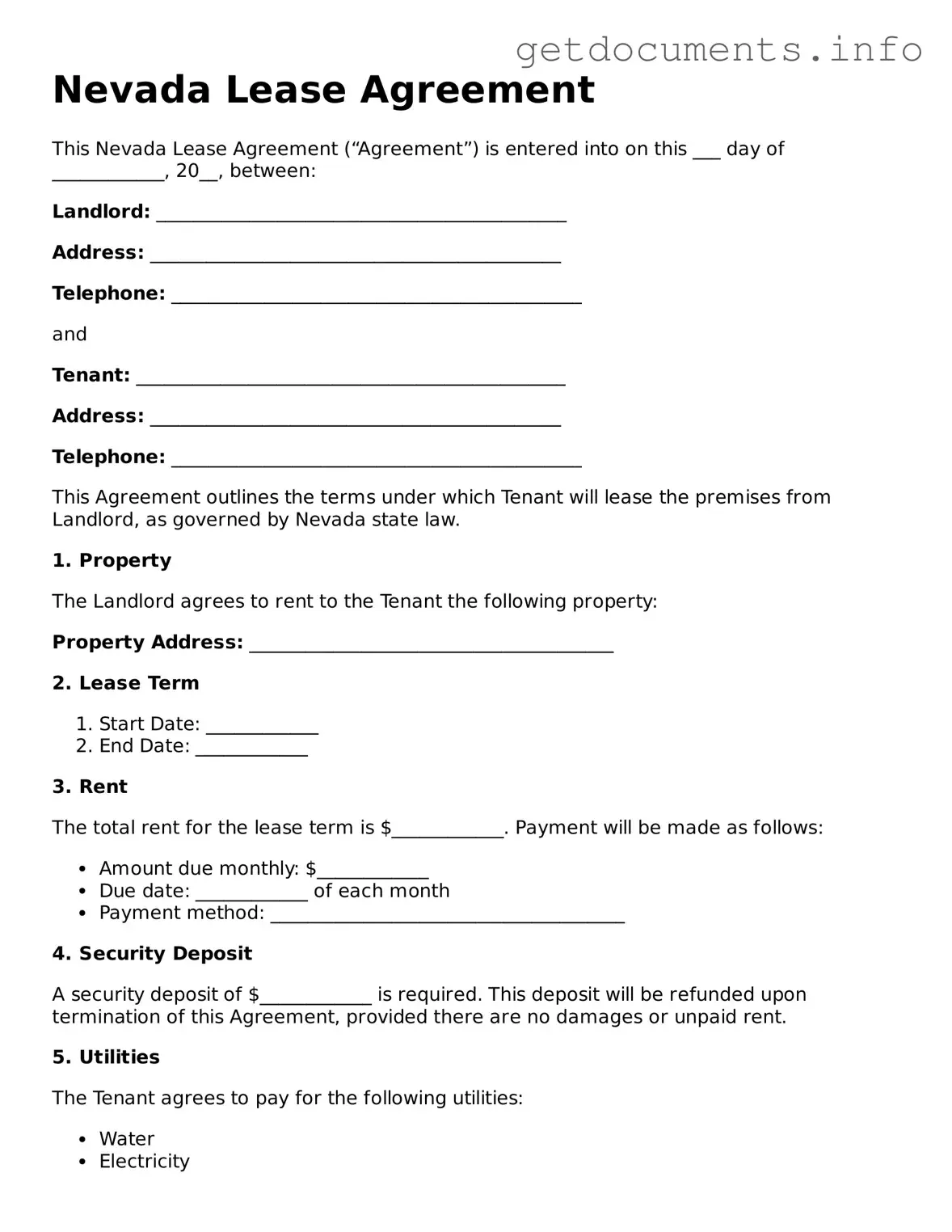Free Lease Agreement Template for Nevada
A Nevada Lease Agreement is a legally binding document that outlines the terms and conditions between a landlord and tenant for renting a residential or commercial property in Nevada. This agreement serves to protect the rights and responsibilities of both parties, ensuring a clear understanding of the rental arrangement. For those interested in renting property in Nevada, it is essential to complete this form accurately.
To fill out the Nevada Lease Agreement form, please click the button below.
Access Lease Agreement Editor
